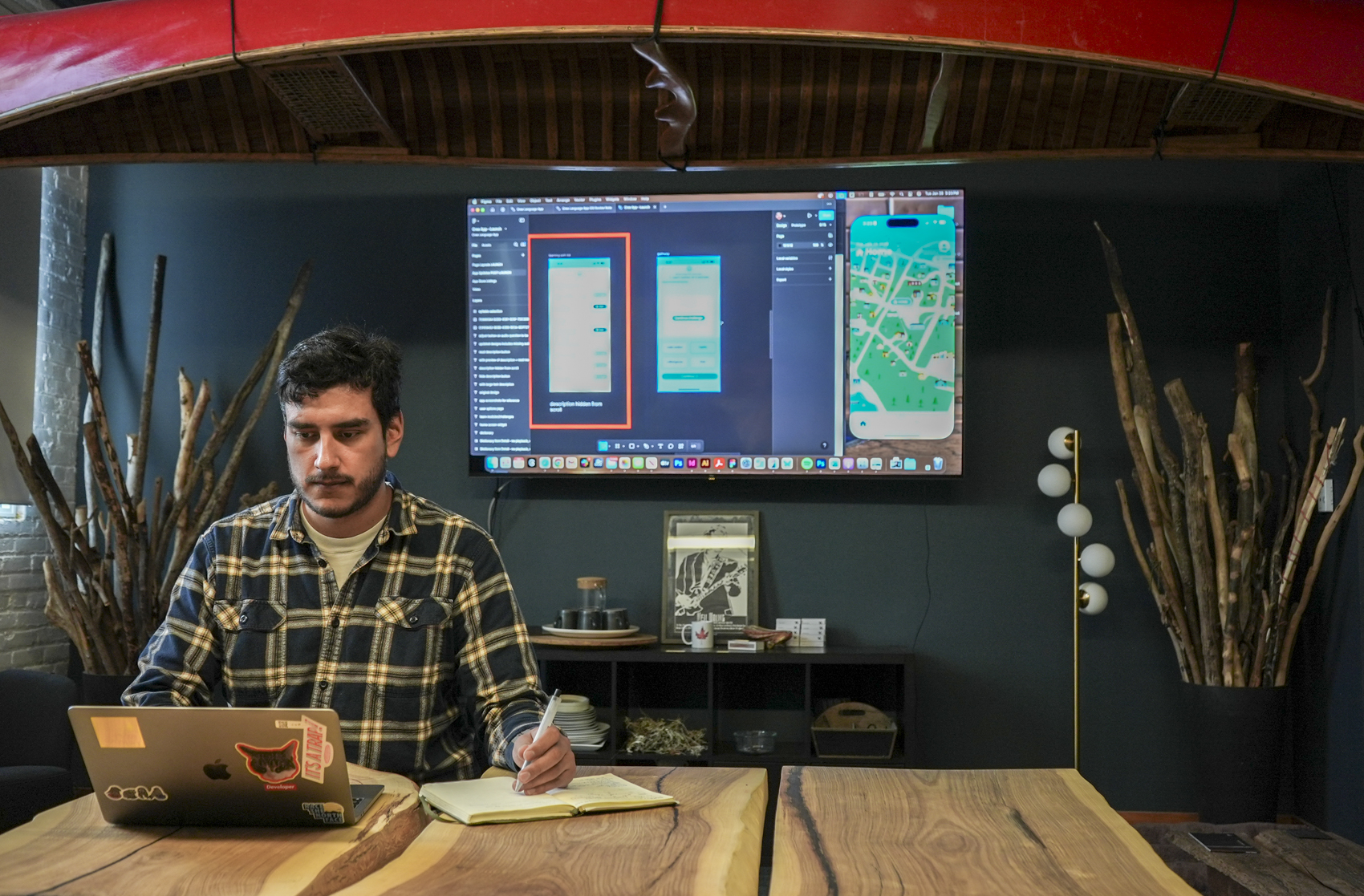Preserving The Past, Empowering The Future: Indigenous Language Revitalization In Action

When a language fades, pieces of tradition and stories are lost; a way of seeing the world that can never be replaced is lost. As an Indigenous-led firm, we understand and deeply value the importance of language revitalization. That’s why we were so honoured to be given the unique opportunity to work with York Factory First Nation (YFFN) and HTFC Planning & Design to revitalize their dialect of the Inineemowin language – colonially referred to as “Cree”- in a language-learning app called Inineemowin: York Factory Cree. This app connects the next generations to their culture and history, while also helping reconnect those who have been removed from the community or culture through colonial practices.
Jordan Dysart, the lead developer for Inineemowin, has built a career around community-driven app development for Indigenous languages, creating tools that reconnect people with their heritage. His approach combines cultural respect with technological innovation, making it possible for younger generations to engage with their languages in a way that feels relevant and accessible. Projects like this remind us of the power of technology when it’s used with purpose and heart. It’s more than an app; it’s a lifeline for stories, traditions, and identity.

First Steps Forward
Jordan grew up in South Indian Lake in Manitoba, so his experiences and background made his work on the Inineemowin language app incredibly special. Jordan’s connection to these communities goes beyond language; it’s a shared experience of place and heritage. Working on the Cree language app brought the feeling of home closer, collaborating with community members in York Landing and other areas who, like his own family, have deep ties to the land and culture. “Anytime I was reviewing recordings, or archival images, or just listening to the language, it was very much a reminder of home. It was a very cool experience to work so close to home as well,” Jordan told us.
He recalls reviewing old recordings during the development process, showing them to his own grandparents and observing their reactions to regional language variations as a powerful experience that reinforced the value of preserving these micro-dialects. The sense of “coming home” while working on this app made it uniquely personal and fulfilling.
For Jordan, his first experience with language revitalization began in 2016, where he collaborated with the Lower Elwha tribe to help digitize recordings of their last native Klallam speakers.The Klallam dictionary, published in 2012, laid the foundation, but the project aimed to make the language accessible and engaging for young learners through a digital format. Through a heartfelt collaboration with passionate language teachers, they brought these archival treasures from the 1990s to life with a groundbreaking app.
Following the Lower Elwha project, he moved on to work with Tutchone-speaking communities, first in Southern Yukon with the Ta’an Kwachan Council, and later with the Nacho Nyak Dun First Nation in Central Yukon. Observing similarities between Tutchone and Cree words, despite the vast geographic distance, was eye-opening and pointed to deeper cultural connections. These projects inspired Jordan and his commitment to language preservation leading him to study cultural anthropology and linguistics to better understand how languages form and evolve. With this, Jordan brought his experiences, and knowledge to collaborate with York Factory First Nation (YFFN) and HTFC Planning & Design to breathe life into Inineemowin.

Consultation and Collaboration
Vincent Design consulted and collaborated with HTFC and YFFN, brainstorming a number of ideas and concepts that needed to be transformed and delivered in the app. The question was how to deliver such a complex language in an easily accessible way, and in such a way that would have an impact. The end goal was to fully immerse audiences, to combine technological innovation with tradition and culture.
With Jordan’s past projects, he found that Inineemowin was “a dream project” because of the remarkable technological advances and the potential to explore his passion for Indigenous language revitalization. Jordan developed the app so that users could actively engage and connect with the language, through various games and quizzes.
“With the access to modern technology, being able to move really fast, a lot of these ideas that we brought to the app were things that I’ve been ruminating on for a long time. But to actually execute on that, to actually have the time to sit down and try these ideas and develop them, get the support of language teachers, get the support of designers to bring everything together, has been kind of like a dream scenario for a really long time.”
There was a delicate balance between asking the Elders and language teachers to come up with lessons to teach and not overburdening them with starting this all from scratch. Vincent Design collaborated with HTFC to strike that balance between YFFN’s vision for the app and an action plan of what lessons could be included.
The end product was taking a few simple words and concepts and slowly advancing them so learners can build their knowledge into developed phrases. From there, the team was able to get the lessons recorded by the Elders and language teachers so the app’s users could hear the words and concepts directly from those in the community.
Jordan said that working with language teachers, community leaders, and linguists was a key component as it allowed the teams to bridge cultural knowledge with technical expertise. This collaboration ensured the app was not only accurate but culturally relevant, reflecting the stories and experiences unique to each community.
This experience emphasized the incredible complexity of balancing technical constraints with language goals, pushing development skills and encouraging creative solutions. By developing the app in this way, it helps make language preservation accessible to all audiences regardless of where they are or their experiences with language learning.
Transformative Technology that Empowers Indigenous Communities
Jordan’s work shows the transformative power of digital tools in the fight to preserve Indigenous languages. His apps don’t simply record words; they make the language adaptable, vibrant, and relevant in today’s fast-paced world. And beyond language, these apps preserve the values embedded in the words—the sense of community, respect, and connection to the land that is central to Indigenous culture.
Inineemowin: York Factory Cree was an extremely valuable experience for Vincent Design. The ability for us to collaborate with HTFC and YFFN to create an accessible tool for communities to connect with their culture and with their language is something that we know is only just the beginning. The possibilities that have come out of it, and the possibilities that are in the future are inspiring.
As for the future of Vincent Design working on more language apps? Jordan is confident that technology will keep advancing and the space for language revitalization will continue to grow. He believes there is a future where AI will empower development teams to accelerate projects and expand them beyond what’s been done so apps can be more robust and accessible to anyone wanting to create something similar.
For Jordan, each interaction with the app is an opportunity to reconnect with the language and keep it alive for future generations. His vision is one of hope: a future where Indigenous languages thrive in digital spaces and beyond, accessible to anyone eager to learn, reclaim, or deepen their connection to their heritage.
